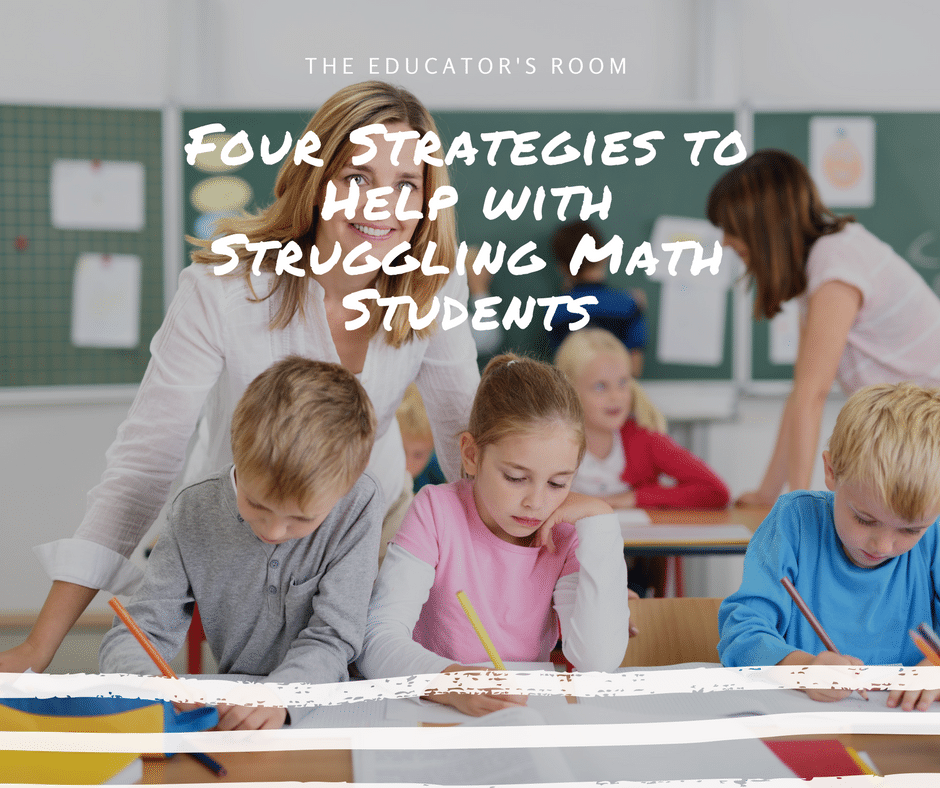I have heard a million excuses from my students when asked why they have a bad grade in math. It’s too boring. I don’t get it. The teacher hates me. Whatever the reason, there are some strategies teachers can use in the math classroom to better reach students who may have thrown in the towel. I have compiled a list of what’s worked for some of my Math RTI students, and here they are:
Use the flipped classroom
The number one reason my students say they don’t “get” math is because the teacher talks too fast. I hear it all the time. They tell me when their math teacher asks, “any questions?” They haven’t even digested the information enough to formulate a question, and then…once they do have a question, they’ve moved on to something new.
[bctt tweet=”The number one reason my students say they don’t “get” math is because the teacher talks too fast.” username=”EducatorsRoom”]
If you are unfamiliar with this teaching strategy, The Flipped Classroom involves recording your math lesson and making the videos available online for students to watch at home, or outside of class time. With the flipped classroom, struggling students can pause the video, think about what is being said, try it in their notes, and press play when they are ready to do so. They can watch, pause, re watch, as many times as they individually need. Some teachers require students to take notes, or to work out some of the problems as they watch the video. This way, when students come to class, class time is used to practice the lesson, with the teacher acting as a coach, conferencing with students, correcting misconceptions, and providing support or extensions for students who need it. Even if the idea of a “flipped classroom” scares you, recording your lecture is never a bad idea for your struggling students.
Students who struggle in math need time. The flipped classroom is the perfect solution for the math student who works slowly. One of the reasons I love this teaching strategy is because my students who struggle in math need to see you solve a problem, not once, not twice, not even three times- they need to see it and try it sometimes as many as ten times! (I am not even exaggerating, I’ve witnessed it firsthand).
Allow students to have an example near them while they work, yes- even on assessments
In my experience, if a student is struggling in math, they may also struggle with their working memory. This, according to Dr. Matthew Kruger from ADDitude magazine, can “impair a child’s ability to follow multi-step directions, tap into old information, or quickly recall lessons.” All the time, I have students who say “I could do this yesterday, but as soon as I got the quiz I couldn’t remember what to do!” If they have an example to look at, it helps them remember the steps they’ve been practicing. Once the student feels confident, they will gradually need these less and less.
Encourage them to “think out loud” when solving math problems
Having my students talk through their problems is something I practice daily. Sometimes if I hear a really great explanation, I will stop the class so everyone can hear it (of course they roll their eyes when I do this, but if its a great explanation they have to share!) Research shows that students learn better when they explain their own problem-solving steps (Berardi-Coletta, Buyer, Dominowsky, & Rellinger, 1995). This may take practice, and might be uncomfortable for students at first, but you can help by constantly modeling your thinking and asking questions like “How did you get that answer?” or “Why did you choose that operation?” This allows them to develop a deeper understanding of what they are doing, and it also helps me to better understand what they are thinking, so I can address any misconceptions.
Frequently check their work, and give immediate feedback
The reason I love teaching math, as opposed to reading, is you can clearly see a student’s mistakes. Because of this, it is fairly easy to see where a student is struggling. Sometimes its computation, sometimes they use the wrong operation, sometimes they skip a step or use a formula incorrectly. Regardless of the error, you can spot it right away and correct it with them – IF you catch it. Students who struggle need more of your time and attention. Make a point to stop by their desks while they are working and check on their work. If they aren’t getting it, they need more examples, more support, more guidance. If you are lucky enough to have an aid in your class, have them monitor the students who are getting it, and pull a group of struggling students aside and really dissect what mistakes they are making, and address them.
References:
Berardi-Coletta, B., Buyer, L. S., Dominowski, R. L., & Rellinger, E. R. (1995). Metacognition and problem solving: A process-oriented approach. Journal of Experimental Psychology: Learning, Memory, and Cognition, 21, 205–223.
Cruger, Matthew. “15 Memory Exercises for Forgetful Kids.” ADDitude. New Hope Media LLC, 15 Dec. 2016. Web. 20 June 2017.
https://www.additudemag.com/working-memory-exercises-for-children-with-adhd/





Great reminders, thanks for sharing!
Absolutely, even as an adult sitting in a conference, I need wait time to process what has just been explained! Visual reminders are a must in today’s classroom.